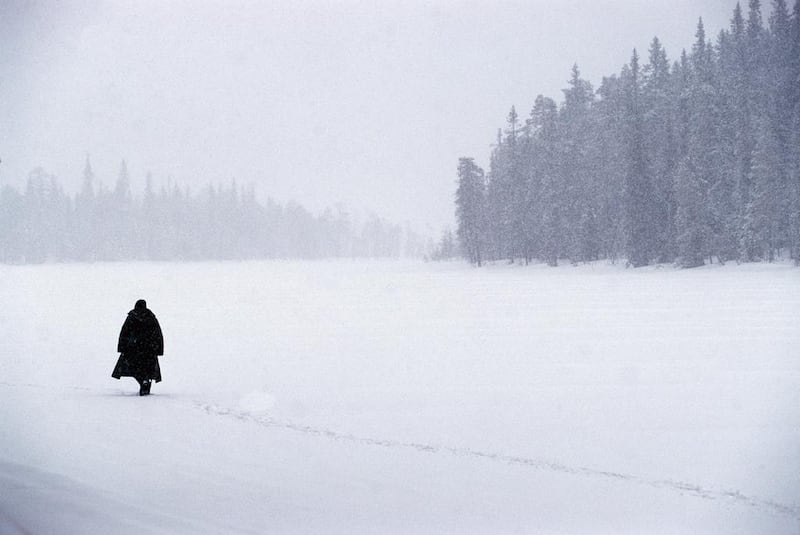In Russian literature, the grounded realist novel is routinely rivalled by a flightier, more absurd counterpart. For every Leo Tolstoy there is a Nikolai Gogol, for every Doctor Zhivago a The Master and Margarita.
Strangeness abounds and flourishes in Mikhail Bulgakov’s classic. “How strange everything is this evening!” thinks Margarita at one point in the mayhem – an understatement if ever there was one.
Strangeness runs riot and wreaks havoc in Gogol's famous short story about "the strange, supernatural detachment" of a man's nose. Weighing up the many implausibilities at the end of The Nose, the narrator tells us that "strange things happen all the time, do they not?"
They certainly do in the work of the contemporary Russian novelist and dramatist Vladimir Sorokin. One of the country's most celebrated and controversial writers, Sorokin started out small, publishing samizdat or banned fiction at home in the USSR. He sold his first novel to a French publisher.
When the Soviet Union crumbled he steadily made a name for himself as an author of edgy, avant-garde fantasies redolent of Andrei Bely (he has won the Andrei Bely Prize) and fellow former underground writer Ludmilla Petrushevskaya.
In recent years, more of his books have been translated into English, including the dark dystopia Day of the Oprichnik and the epic, polyphonic genre mash-up Ice Trilogy.
His latest book to appear, once again courtesy of redoubtable translator Jamey Gambrell, is The Blizzard. Its title and its nineteenth century setting put us in mind of past Russian masters – both Alexander Pushkin and Tolstoy penned short stories called, depending on the translation, "The Blizzard" or "The Snow Storm".
But despite the air of familiarity and the opening segment’s sheen of normality, it isn’t long before Sorokin jolts us by unleashing oddities and transforming a traditional Russian snowscape into his own madcap winter wonderland.
The novel revolves around a predicament. A mysterious epidemic is killing the inhabitants of the village of Dolgoye. Garin, a district doctor, has the vaccine that will halt the spread of “the black plague” and desperately wants to travel to the village but doesn’t have the means of transport.
Enter Crouper, the “bread man”, and his trusty “sledmobile”. The men set off together on a journey that should take no more than an hour-and-a-half. However, thick snowfall turns into a whirling snowstorm and their mercy mission becomes a perilous expedition and endurance test that drags on for days with no end in sight.
So far so real. Equally real are the clear and present dangers the men encounter: breakdowns, wrong turns, steep gullies, sub-zero conditions, chronic fatigue and ravenous wolves.
But Sorokin warps that reality with bizarre touches. It transpires that the epidemic is not wiping out the villagers, it is mutating them into zombies. Crouper’s sledmobile doesn’t resemble a troika led by three horses, it is pulled by 50 miniature horses, each one “no bigger than a partridge”. It isn’t the stump of an old tree that blocks their way but the huge frozen head of a dead giant.
And then there are the pit stops, at which point strangeness is more than an embellished detail, it becomes Sorokin’s default setting.
The travellers rest at the home of a sozzled, foul-mouthed miller who drinks vodka from a thimble and watches holograms broadcast from a radio. Later, at a nomadic camp, a group of “Vitaminders” called Bedight, Drowsy, Slumber and Lull Abai produce small translucent shapes which propel Garin on a mind-expanding trip.
Sorokin’s neat trick is to combine fantasy with reality: to take a rational, pince-nez-wearing doctor from a previous era and plunge him into a post-apocalyptic landscape full of madness and chaos.
Crouper makes for a memorable sidekick, his distinct argot adding splashes of colour to the page (“Nowadays there’s so many things that ye cain’t figure out what they’s for”), the all-consuming blizzard with its moments of whiteout is a fitting metaphor for the interludes of distortion and confusion, and the aftershock from Sorokin’s inspired ending with its nasty surprise for both Garin and the reader lingers long after we have closed the book.
Hypnotic and inventive, this is an immensely rewarding read. It may be Sorokin’s most accessible novel to date, but it still comes with more than its fair share of strangeness to delight and disorientate faithful followers and new recruits.
Malcolm Forbes is a freelance writer based in Edinburgh.





